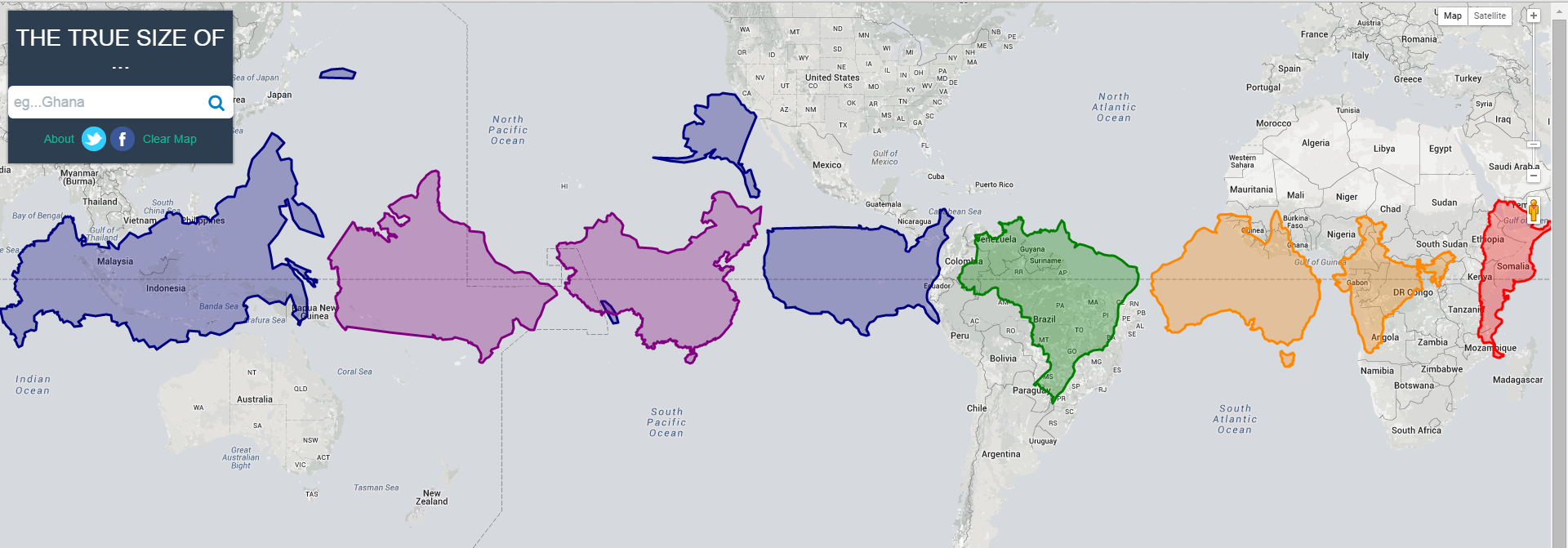One of my favorite resources for language teaching has been maps. There are so many ways that creative teachers can use maps to make engaging experiences for their students. With today’s digitally aggregated, crowdsourced, customized, and mashup map, the potential is even greater. Anyone can create maps that are individualized and customized to their own needs or interests. They can also contribute to online maps as a collaborative act of participatory culture. Websites such as Open Street Map, and the Open Cities Mapping Project are designed for individuals to contribute and co-construct a shared awareness of visual and geographical representation. The easiest of these is Google Maps.
Though many readers are likely to be familiar with these maps for basic navigation purposes, they may not realize how easy it is to create their own customized maps using Google My Maps. Teachers and students may benefit from this guide, created by Google. Users can embed images, videos, or links within maps, allowing them to create interactive experiences they can share with others.

Tokyo Map

Street in Tokyo
I have used Google Maps with teachers and students around the world to create lessons built around scavenger hunts, guided walks through historic sites, and telecollaborative exchanges. In one exchange project, students in Japan and Ohio shared narratives about their daily lives along with pictures and videos of their neighborhoods by embedding them directly on a shared map. This was a simple but powerful approach that allowed students to get a better sense of what the world looks like from someone else’s perspective.
This illustrates one of the great benefits of modern digital maps: the ability to display data visually in a manner that enhances our understanding of the world around us. Numerous online mapping projects have made it easier for us to do things as basic and obvious as navigate our way through an unfamiliar neighborhood, identify recreational and shopping opportunities, or find a place to eat. We can also explore any area and learn more about important socioeconomic characteristics, ethnic diversity, voting results, and crime statistics, as well as a location’s access to healthcare, internet, and social justice.
National Geographic MapMaker Interactive provides teachers and students with an interactive map interface that is paired with their vast collections of data. Users can customize these maps with layers related to food, climate and weather, history, water, earth systems, human populations, environment, energy, animal ranges, culture, economy, and political boundaries.
Many historic maps are also available that provide us with valuable insights into the past, such as this map of the history of Washington DC’s buildings or this collection of maps of the history of the London underground.
Maps can function as prompts for discussions about nearly any topic. For example, the following map illustrates how we may be quite accustomed to spatial representations that distort the actual size of states and nations.
This may be particularly useful for leading discussions with student from parts of the world that are often underrepresented.
Interactive, Crowdsourced Maps
We can create our own interactive maps that allow students to navigate through large quantities of data in a simple and meaningful way. These can be created as a class project or by groups of students to gather and represent data on a variety of topics. There are also numerous existing projects that illustrate the breadth of such projects. Crowdsourced maps can be used to explore things as trivial as people’s favorite burger restaurants:
Or publicly available fruit for foragers:
Crowdsourced maps can also be used to help illustrate important social issues, including social justice:
And dangerous roads around the world:
We can also explore newspapers around the world in numerous languages through the Newspaper Map project:
Maps can also be used to immerse learners in authentic target language contexts. Google earth and street view creates opportunities for learners to navigate actual spaces as if they were present. We can walk down streets in advance of visiting a particular location. We can also engage in social media practices that connect to this kind of activity. A few years ago, I coauthored a book chapter, “Enhancing Linguistic and Intercultural Competencies Through the Use of Social Network Sites and Google Earth,” with many recommendations for such practices (Yeh & Kessler, 2015).
As powerful as maps can be in the language classroom, we now have the opportunity to extend these experiences to include augmented and virtual reality that transports students to immersive experiences. This will be addressed in a future blog entry, but if you are curious, you should check out Google Expeditions.
Additional Resources
- Blog: 10 Ways to Use Google Maps in the Classroom (TheThinkingStick.com)
- Article: Engaging Students Through Google Maps (Edutopia)
- Project Webpage: Mapping Social Justice (The Opportunity Agenda)
- Here is my personal map of my consulting and keynote speaking. It is a fun and practical way to document my own travel.
Reference
Yeh, E., & Kessler, G. (2015). Enhancing linguistic and intercultural competencies through the use of social network sites and Google Earth. In J. Keengwe (Ed.), Promoting global literacy skills through technology-infused teaching and learning. Hershey, PA: IGI Global.
from TESOL Blog http://blog.tesol.org/mapping-engaging-experiences/








